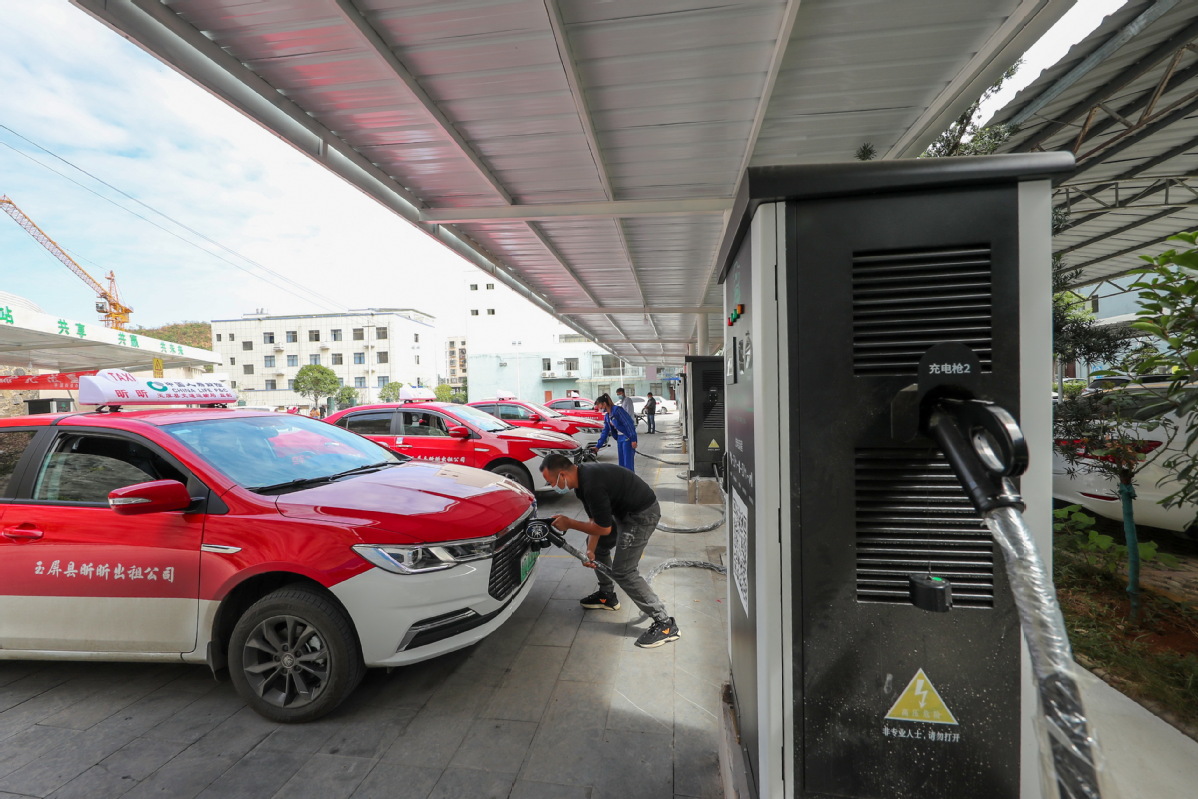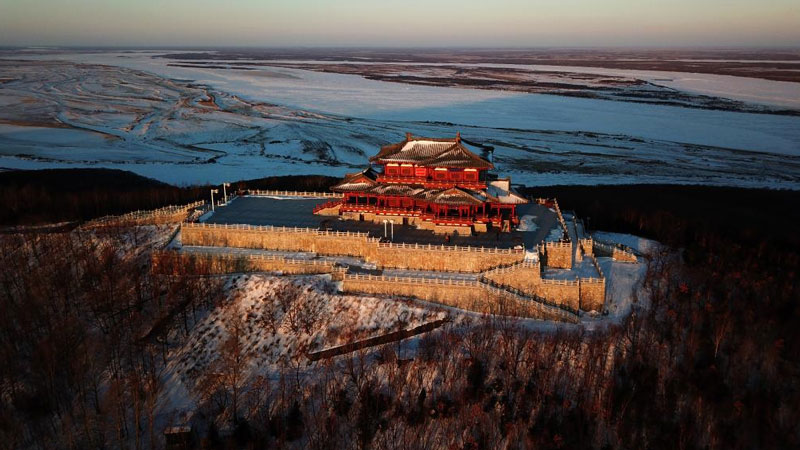Charging piles enhance ease for NEV drivers (2)

Drivers charge electric taxis in Tongren, Guizhou province, in October. [Photo by HU PANXUE/FOR CHINA DAILY]
"Despite rapid development of EV charging, the sector still faces some major challenges such as uneven deployment, difficulties attaining profitability and insufficient technical innovation and application," Jiang said.
"It can be hard sometimes to find a charger outside the city," said Xiao, the Beijing-based EV user. "As a result, we seldom drive long distances though our family is eager to go on road trips during the holidays.
"In addition, the maintenance of chargers at certain stations is not timely, and compatibility between different vehicles and chargers can still be a problem," he said.
Jiang said charging infrastructure coverage currently is highly correlated with regional economic development and city size. The average coverage rate of public charging infrastructure in megacities' central areas exceeds 90 percent, but charging infrastructure coverage in counties and townships, highway service centers and national and provincial trunk roads is still insufficient.
"In addition, the charging infrastructure sector requires large initial investments and comes with high operating costs. The average utilization rate is only about 10 percent, which makes it difficult for the industry to make a profit," he said.
Jiang said there are three major business models on the market — slow charging, fast charging and battery swapping.
The first two are cheaper and easier to promote in a wide range of scenarios. The third provides a variety of services to EV owners, such as battery swapping, maintenance and often, a place for drivers to rest. Stations using the third are able to provide users with a good service experience, but it entails relatively high operating costs, he said.
"However, high-watt charging, which allows fast charging, and battery swapping, have not been applied in a wider range of scenarios yet due to factors like a lack of supporting policies and unified industrial standards. Under such circumstances, many companies are eager to use low-end products as a preemptive investment to claim markets, which brings adverse effects to the high-quality development of the industry," he added.
Also, those building charging facilities are often faced with such problems as a scarcity of land, insufficient power capacity and a lengthy construction approval process, which increases costs and affects operations, Jiang said.
"Innovation in business models also requires the continuous advancement of technology, including the improvement of batteries to allow more charge-and-discharge cycles. Further efforts are also needed to optimize the policy system, such as the power pricing mechanism and electricity market reform," said Wang of the CNPC research institute.
Jiang said that since the 13th Five-Year Plan (2016-20) period, the Chinese government has been rolling out supportive policies such as subsidies for charging infrastructure builders and operators, which has promoted the rapid expansion of charging infrastructure. During the 14th Five-Year Plan (2021-25) period, the focus of support has been changed from numerical growth to infrastructure quality.
Last January, the National Development and Reform Commission and nine other departments released advice on improving EV charging infrastructure services. It cited the need to accelerate the construction of charging infrastructure in residential areas, cities and rural areas, strengthen research and development on new technologies and better supervise security.
In August, China issued an action plan that vowed to provide basic charging services at service centers along highways by the end of 2022, except in areas affected by cold weather and high altitudes. The plan was released by the Ministry of Transport, the National Energy Administration, State Grid Corp of China and China Southern Power Grid.
In answering the nation's call, local governments have stepped up efforts to promote the development of charging facilities.
Shanghai announced in October a plan to build 760,000 chargers and 300 battery swapping stations by 2025, and to build and put into operation over 70 hydrogen refueling stations. Beijing also plans to build more chargers, aiming for a total of 700,000 by 2025.
 |
Photos
Related Stories
- China's power battery output surges in 2022
- China's NEV sector expected to hit new heights in 2023
- China's Guangdong launches Europe-bound freight train carrying NEVs
- China's auto sector maintains sound momentum in 2022, NEV sales soar
- China's NEV sales nearly double in 2022
- China sees surge in registered NEVs in 2022
Copyright © 2023 People's Daily Online. All Rights Reserved.









